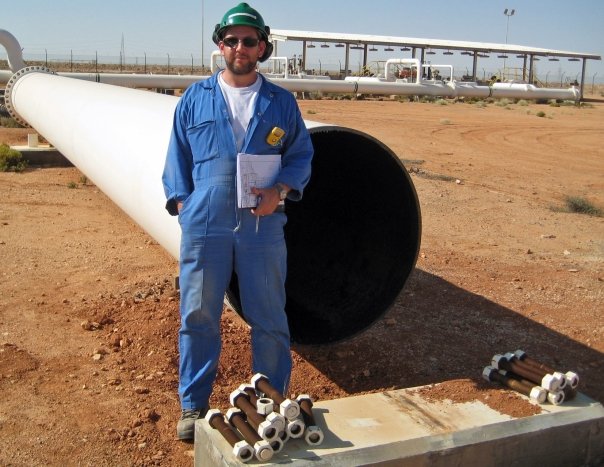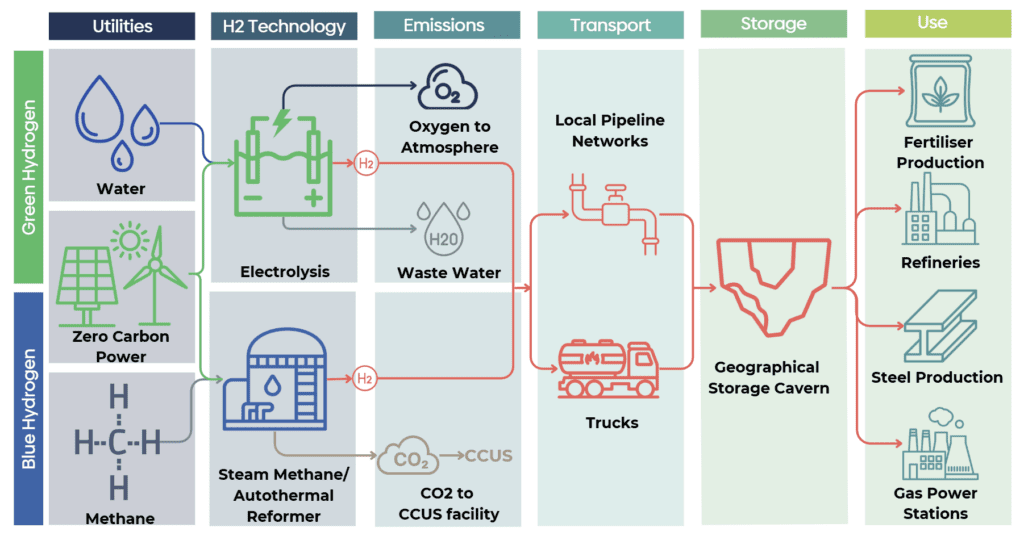The UK has set ambitious goals for carbon capture, utilisation and storage (CCUS), but how do these compare with the reality of current project pipelines? Looking at policy targets, energy system modelling and project data gives a clearer picture of where the UK stands.
Why CCS Matters
To reach net zero by 2050, emissions reductions alone are not enough. Some sectors are particularly hard to decarbonise, such as heavy industry, cement, hydrogen production and power generation. CCS, along with technologies such as Bioenergy with Carbon Capture and Storage (BECCS) and Direct Air Carbon Capture and Storage (DACCS), will be essential to manage residual emissions and deliver large-scale removals.
The UK government has committed to creating four CCUS clusters by 2030, with a target of 20–30 million tonnes of CO₂ captured each year. This ambition is central to its Net Zero Investment Roadmap. However, delivery remains challenging, and recent reports from the Public Accounts Committee have already highlighted reduced ambitions and delays to the first wave of projects.
Comparing the Pathways
Different organisations set out varying levels of CCS demand for 2030 and beyond:
-
DESNZ CCUS Vision: 20–30 MtCO₂ by 2030, based on four industrial clusters.
-
CCC Carbon Budget 7 (CB7): Around 13 MtCO₂ by 2030, focused on removals, fuel supply and electricity generation, with a steep increase after 2030.
-
NESO Future Energy Scenarios 2025 (FES25): A lower range of 4–12 MtCO₂ by 2030. Their 2050 projections suggest capture equivalent to 21–31% of the UK’s 2022 emissions.
Together, these create a wide band of potential outcomes for 2030. The question is how the UK’s project pipeline measures up against these scenarios.
The CCS Pipeline
The UK has a pipeline of CCS projects in development, from early concept through to projects already in delivery.
-
By 2030, projects in FEED and delivery stages could provide around 23 MtCO₂ per year of capacity. If realised, this would exceed both the CCC target and the maximum FES25 projection by almost double.
-
By 2050, projects in the broader pipeline could deliver nearly 100 MtCO₂ per year, aligning well with the higher end of FES25 projections and surpassing the CCC’s expected range.
This suggests the UK is not short of ambition within its project pipeline. The challenge lies in whether these projects can be delivered on time and at the scale required.
Key Challenges
Several factors will determine whether ambition translates into reality:
-
Timing: 2030 is a critical milestone. Early delays could have knock-on effects for the 2040 and 2050 pathways.
-
Policy certainty: Clear regulatory frameworks and long-term signals are essential to secure investment and supply chain growth.
-
Cluster integration: CCS depends on aligning emitters, transport networks and storage sites. Any mismatch could limit effectiveness.
-
Technology mix: Different pathways place emphasis on different uses of CCS, from removals to hydrogen production. Flexibility will be needed as the system evolves.
-
Public and political support: Ensuring CCS is seen as part of an integrated decarbonisation strategy, alongside renewables, electrification and hydrogen, is crucial for building momentum.
Looking Ahead
By 2030, the UK could capture more than enough CO₂ to meet near-term pathway targets, but this will only happen if projects are delivered as planned. Beyond 2030, demand for CCS rises sharply, with trajectories from different models converging more closely by 2040 and 2050. The scale-up from 2030 onwards will require unprecedented coordination across industry, government and infrastructure.
In Summary
The UK CCS targets for 2030 are ambitious. The project pipeline is large enough to meet or even exceed near-term demand, but success will depend on execution. As we move into the next decade, CCS deployment must accelerate rapidly to play its full role in achieving net zero.
All of this information can be explored in detail through the Olsights Eye. To understand what these pathways mean for your projects, clusters or investment strategy, contact us for more details.








